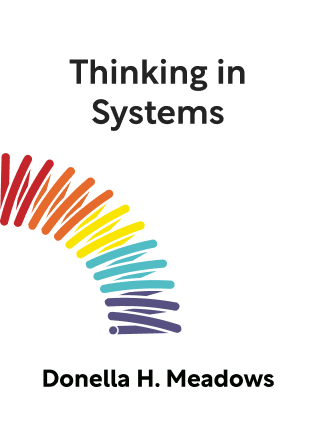

This article is an excerpt from the Shortform summary of "Thinking in Systems" by Donella H. Meadows. Shortform has the world's best summaries of books you should be reading.
Like this article? Sign up for a free trial here .
What is bounded rationality theory? How does it act as a limitation in systems thinking?
Bounded rationality theory suggests that we can only make decisions from our own viewpoints with limited information.
Read more about bounded rationality theory, and ways to expand our own boundaries in systems thinking.
Bounded Rationality Theory
We can only make decisions with the information we comprehend accurately. This is where bounded rationality theory comes in.
First, sometimes the information just doesn’t exist. Especially if it’s far removed from us.
- We don’t know what others will do.
- We don’t foresee how our actions will affect the system.
Second, even if we had total information, we’re limited in the information we can take in and digest.
Third, even the information we can take in is biased.
- We overweigh the present and discount the past, we are biased to information that confirms our beliefs.
- (Shortform note: Read more about cognitive biases in Thinking, Fast and Slow and Influence.)
It’s small wonder then that we can act with good intentions but cause bad results with bounded rationality theory.
- A fisherman is thinking about the loan on his boat, his newborn child, the risk of injury that might jeopardize his career. He doesn’t have information about the global stock of fish. So he tends to overfish.
The Better Approach
To improve on bounded rationality theory, don’t blame an individual for the behavior. If you were put in that situation, with exactly the information they had and their preferences, you would probably behave the same.
The way to fix a system is not to put in new people, but to change the system.
Oversimplifying System Boundaries
When working to get past bounded rationality theory, you can also consider the system’s boundaries. We studied stock-and-flow diagrams above, we represented the inflows and outflows as clouds. These mark the boundaries of the system we’re studying.
We cap systems to simplify them. This is partially because we can only tolerate so much complexity, but also because too many extra details can obscure the main question. When thinking about a fishing population, it would be confusing to have to model the entire world economy and predict how a football team’s performance might work its way down to fishing behavior.
However, we tend to oversimplify systems. We draw narrow boundaries that cause us to ignore elements that materially affect the system. This can cause the system to behave against our expectations, because we had an incomplete model of the system. For example:
- A highway designer that ignores how people settle in a city will build a highway of a certain capacity. She may ignore that people tend to settle along a highway, which now makes it insufficient for the traffic to support.
- A car manufacturer might only concern itself with buying parts from its supplier, ignoring how the supplier itself operates and gets its materials. If a global aluminum shortage happened, the car manufacturer would be unpleasantly surprised.
We also tend to draw natural boundaries that are irrelevant to the problem at hand. We draw boundaries between nations, between rich and poor, between age groups, between management and workers, when in reality we want happiness and prosperity for all. These boundaries can distort our view of the system.
(Shortform note: A hierarchy, discussed in the previous chapter, naturally introduces system boundaries. A subsystem is largely concerned with how it operates and can ignore the operations of other subsystems. This is one of the virtues of hierarchy that leads to efficiency, but it can also prevent a subsystem from perceiving the whole system accurately. For example, a corporation’s product development team may happily work on developing its new products, ignoring that the accounting department is engaging in fraud that will cause the entire company to collapse.)
The Better Approach
The ideal balance is to set the system boundaries at the appropriate scope for the question at hand. Don’t exclude anything that’s important, and don’t include anything irrelevant.
Furthermore, when you move to a new question, readjust the boundaries to be appropriate for the new question. Don’t be stuck to your old boundaries.
- The boundary of a river may be logical for drawing the boundary between nations, but it’s a terrible boundary for managing water quality.
It’s important to take bounded rationality theory into mind when considering how to best create a system.

———End of Preview———
Like what you just read? Read the rest of the world's best summary of Donella H. Meadows's "Thinking in Systems" at Shortform .
Here's what you'll find in our full Thinking in Systems summary :
- How the world, from bathtub faucets to fish populations, can be seen as simple systems
- The key system traps that hold back progress, such as escalating arms races and policy addiction
- Why seeing the world as systems can give you superpowers in work and life






